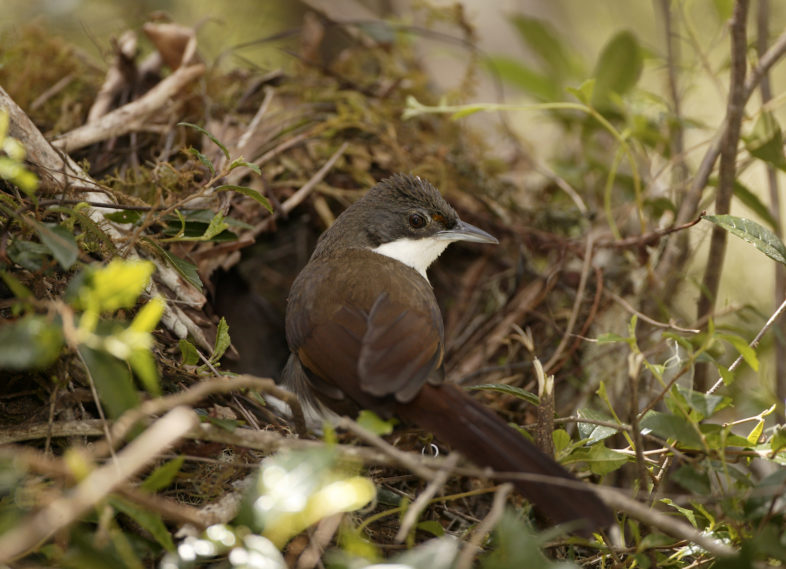
The first described nest of Western Chat-Tanager at VCE’s long-term study site in cloud forests of Sierra de Bahoruco, Dominican Republic. © Eladio Fernandez
A recent peer-reviewed paper by VCE in the Wilson Journal of Ornithology sheds new light on one of Hispaniola’s most enigmatic, rare, and vulnerable endemic birds – the Western Chat-Tanager. Restricted to high-elevation cloud forests in Haiti and the southwestern Dominican Republic, the species is considered to be at risk of extinction. Its secretive habits in dense understory thickets of these remote forests have long kept its ecology a mystery. The nest of Western Chat-Tanager remained undescribed to science until VCE’s 2004 discovery in the DR’s Sierra de Bahoruco!
VCE’s recently-published findings, based on a radio-telemetry study in March and April of 2010, provide insights on non-breeding home range sizes and nocturnal roosting locations of Western Chat-Tanagers. Based on a small sample of only six individuals, including two apparent male-female pairs, VCE found that, while male home ranges are significantly larger than those of females (average = 2.2 hectares vs. 0.9 ha), a high degree of overlap existed between pair members in the core areas of their home ranges. Further, pairs tended to roost close to one another at night, with an average of <16 meters separating males and females.
Western Chat-Tanagers are urgently in need of focused research to inform conservation efforts. VCE’s findings provide a foundation for future demographic and ecological studies of this globally vulnerable Hispaniolan endemic and could form the basis for both an accurate range-wide population estimate and much-needed prioritization of habitat conservation measures.
You can read the paper’s abstract here or request a full copy on Research Gate.
